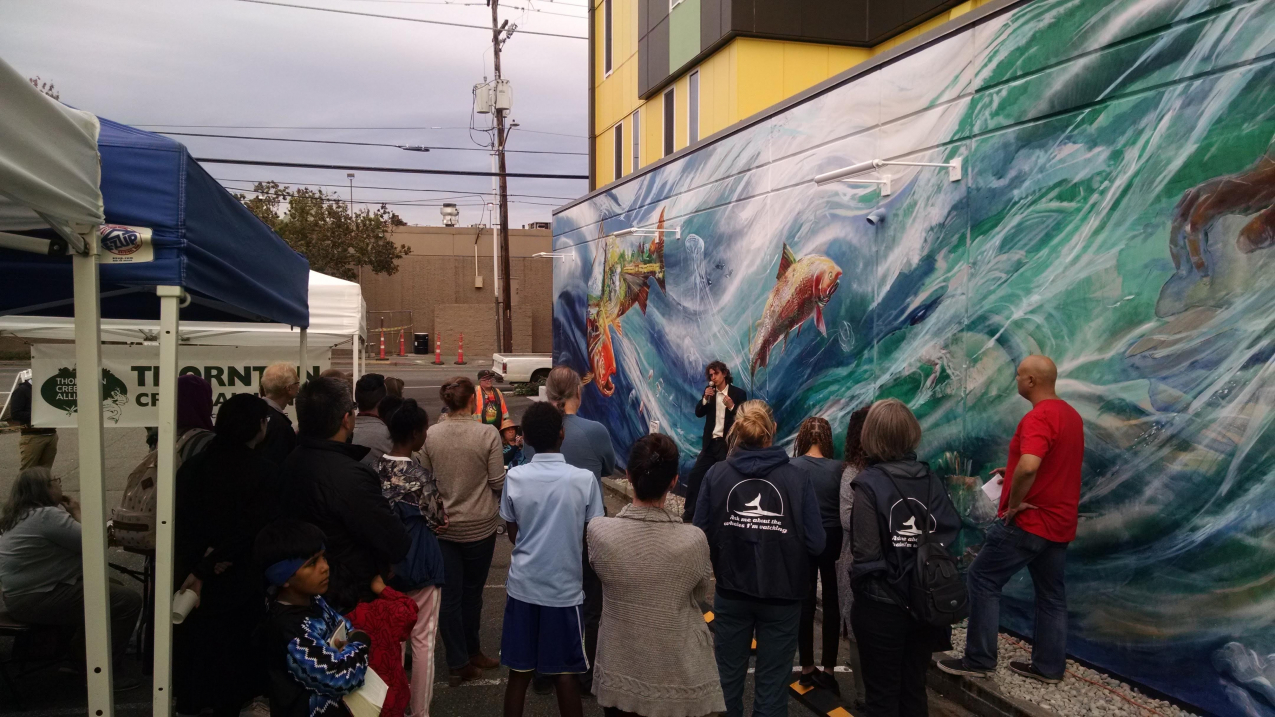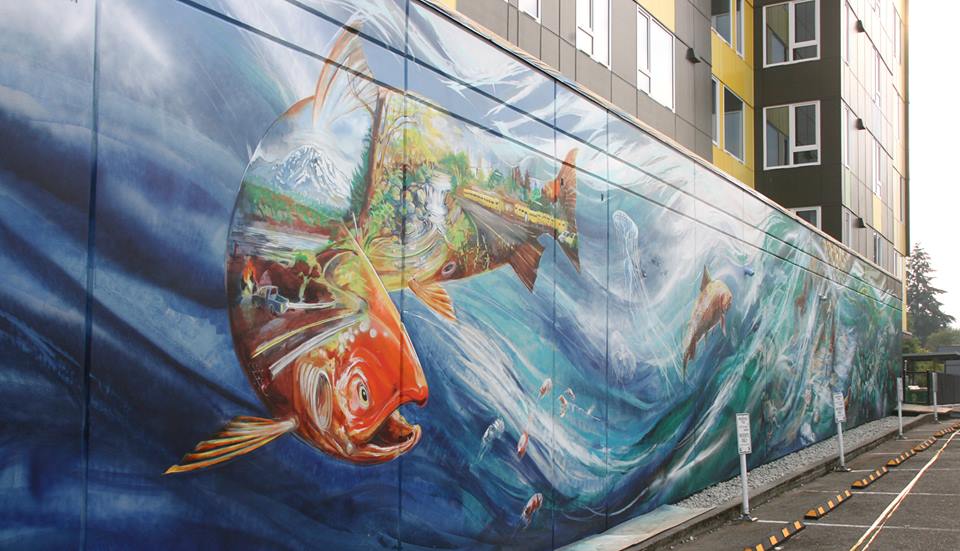Pacific salmon fuel a $3 billion industry, supporting tens of thousands of jobs. From grizzly bears to killer whales, at least 137 species depend on these important fishes. But their annual migrations between stream and ocean — sometimes more than 1,000 miles — place salmon in direct contact with human development.

Artist Esteban Camacho Steffensen addresses community members during an event to celebrate Seattle’s new salmon mural. (Image credit: NOAA)
In Thornton Creek, Seattle’s biggest urban stream, salmon struggle for survival. The creek winds through a watershed that is home to more than 70,000 people. Untreated waste from camp sites, leaking side sewers, and runoff of polluted stormwater plague this waterway. In addition to water quality challenges, salmon are up against barriers from undersized culverts and large sections of stream that are piped underground.
NOAA Fisheries West Coast Region and the Pacific Northwest College of Art offsite link worked with artists and community groups to put a spotlight on salmon in Thornton Creek, encouraging urban salmon stewardship through the Science in Studio program.
Nine distinct groups
of Chinook salmon
are listed as threatened or endangered under the Endangered Species Act.
Through public art and community workshops, the program inspired Seattle residents to reduce urban runoff and protect endangered salmon while bringing vibrant artwork to an underserved neighborhood. A 14-by-85-foot mural was installed at the Low Income Housing Institute’s new family housing unit along the highly trafficked Lake City Way. This LEED-Certified building features a solar array, resident gardens, and a preschool operated by the Refugee Women’s Alliance. The mural was designed and painted by the Lake City Community Center, Lake City Young Leaders program, Lake City Seniors, and Lake City Future First.

The mural depicts a Chinook salmon and the many factors that influence its survival. Chinook salmon depend on snow pack, which produces the clean water that flows through mountains, rivers, bays, estuaries, and finally, to the ocean. The image shows these habitats interwoven with human activities, including those — like washing cars and fertilizing lawns — that bring toxics into waterways. “The salmon is a metaphor for the cycle of life in the Pacific Northwest. The overall picture is positive, but it also shows the consequences of our activities,” explained the artist, Esteban Camacho Steffensen.
A diverse cross-section of the community came together to bring this mural to life. More than 30 community members from 22 different countries helped Steffensen localize the mural. Several intergenerational groups — including the Lake City Young Leaders, Sound Generations, and Lake City Seniors — brought their vision and talents to the bilingual design. Participants brainstormed positive and negative attributes of their community to incorporate into the mural and worked alongside Steffensen for three weeks as he painted.
To engage the broader community, NOAA Fisheries West Coast Region hosted a series of talks and informational booths at the unveiling of the new mural. Six talks highlighted the importance of stewardship, the relationship between art and science, and the power of community engagement. Eight community partners hosted booths to talk about local sustainability issues and ways that community members can get involved.
This mural is one of six installations throughout California, Oregon, and Washington. Each mural relies on community involvement and serves as a visible reminder of our connection to local watersheds and our cumulative effect on endangered species.
This story was originally published in the Fiscal Year 2018 NOAA Education Accomplishments Report.



